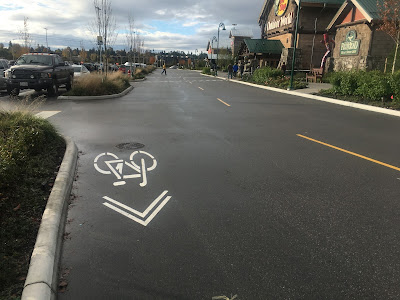Metro Vancouver is a federation of local governments of which the City of Langley is a member. For more information on the services and governance that Metro Vancouver provides, check out an infographic I posted. Municipalities have some mayors and councillors that sit on various Metro Vancouver boards and subcommittees, but this is only a small subset of the total number of councillors in our region.
One of the ways that the regional district keeps all mayors and councillors up to date is by hosting biannual Council of Councils sessions. These sessions provide updates and facilitate dialogue on key regional initiatives.
On Saturday, I attended the fall Council of Councils session. The following is a brief summary of items discussed.
While the regional district uses the name Metro Vancouver, its legal names are the Greater Vancouver Regional District, Greater Vancouver Sewerage and Drainage District, and Greater Vancouver Water District. Because of the success of the Metro Vancouver brand, the regional district is now asking the province to replace “Greater Vancouver” with “Metro Vancouver” in the legal names of all the regional entities.
Metro Vancouver released its Regional Housing Strategy earlier this year. The federal government is currently working on a National Housing Strategy. Regional representatives and the federal housing minister have met several times about creating synergies between these strategies. With the support of the federal government, it is looking very promising that the Regional Housing Strategy many actually be able to move forward.
Last year, I posted about the Regional Propensity Initiative. Since that time, there have been several meetings on this initiative. It appears that it will be going full-steam ahead in 2017 and beyond.
 |
| Hearing a presentation on the proposed 2017 Metro Vancouver budget. Select image to enlarge. |
Metro Vancouver is currently fine tuning its 2017 budget, you can read more about the budget on the Metro Vancouver website. The short of it is that the budget will be increasing by 5.6%. One of the largest drivers of this increase is the upgrading and expansion of sewer infrastructure in the region. If you have a $860,000 house, the budget increase will translate into around a $16 annual increase in the Metro Vancouver portion of your property tax bill.
Metro Vancouver’s regional growth strategy was adopted 5 years ago. Under provincial legislation, the regional district must see if there is a desire to have a comprehensive review of the strategy every 5 years. The regional district has been reaching out to local governments and other government organizations to see if there is a desire for a comprehensive review. Because the regional growth strategy is relatively new, early results appear to support some tweaking to the growth strategy, but no desire for a comprehensive review.
The regional growth strategy was designed as a living document, so it has been and continues to be refined. Some of the things that are being updated in the regional growth strategy include urban centre and frequent transit development area policies, and a review of how to support industrial businesses in the region.
Kevin Desmond who is the CEO of TransLink presented at the session. He went over the new proposed 10-Year Investment Plan for transportation in our region. Besides going over the 10-year plan, he also provided some insight into TransLink.
A good news story is that ridership is growing again. It was up about 2% last year, and is looking like it’s going up a further 2% this year. According to Desmond, the growth in ridership is happening faster than the rate of population growth. TransLink’s frequent transit network is seeing around a 5% increase in ridership.
Desmond noted that TransLink hasn’t done a good job of showing customers and residents in our region that it is listening to their concerns, and actually taking action from those concerns raised. He committed to doing a better job of engaging with people in our region.
He also noted several projects that TransLink is working on. This first project that he talked about was Compass Card 2.0. Some of the new features that are in the works for the system include business accounts, smart phone mobile ticketing, and the ability to use your credit/debit card to tap on/off transit.
They are also working on improving customer alerting, improving accessible transit service, and working on improving regional goods movement in collaboration with other stakeholders.
After hearing from Desmond at the session, we had a presentation about the upcoming Zero Waste Conference which will be taking place on November 3rd.
























 F
F










